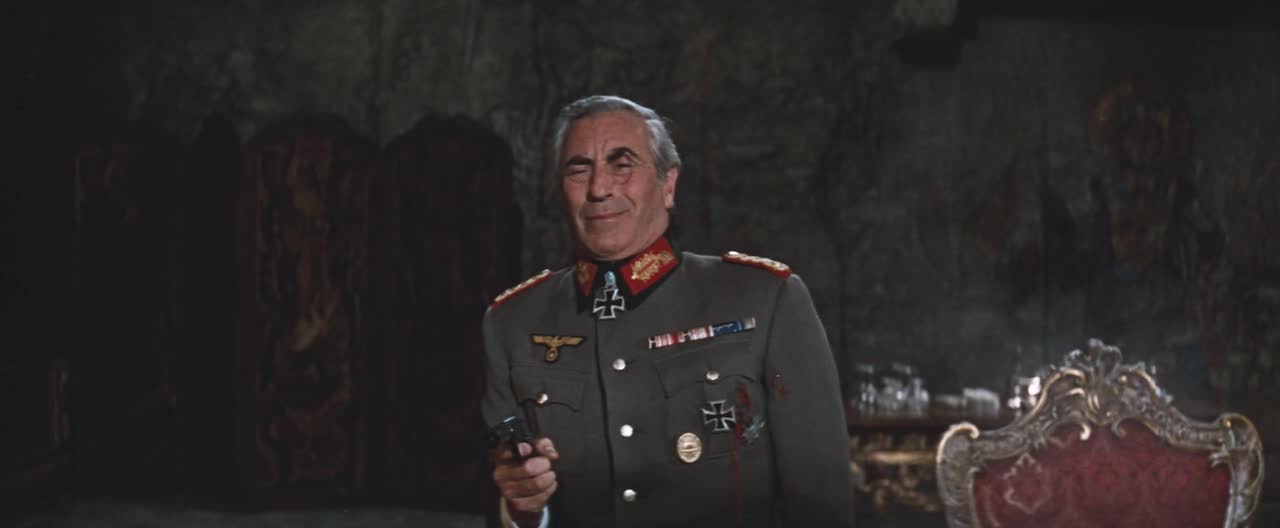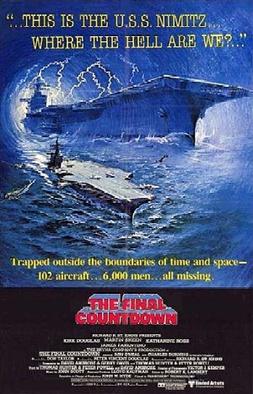SYNOPSIS: In what might be the shortest opening narration the movie opens
with “This is the story of a ship”. The ship is the HMS Torrin which is sunk
during the Battle of Crete fourteen minutes into the movie. Some of the crew,
including Capt. Kinross (Noel Coward), take refuge in a lifeboat. The film then
settles into a series of flashbacks relating the stories of Kinross, Ordinary
Seaman Blake (John Mills), and others. The various flashbacks contrast the
lower, middle, and upper class strata on a ship.
BACK-STORY: “In Which We Serve” was released in 1942. The
movie was a tour de force for Noel Coward.
He produced, directed (with assistance from David Lean), starred, wrote
the screenplay, and even helped with the music.
He was awarded an honorary Oscar for “outstanding production
achievement”. It lost Best Picture to
“Casablanca”. It was also nominated for
Original Screenplay. The movie was given full
cooperation of the British Ministry of Information. It gave advice on how to do effective
propaganda.
TRIVIA: wikipedia,
imdb, TCM
1. It
was inspired by Captain Lord Louis Mountbatten.
Specifically, his captaincy of the HMS Kelly, which was sunk in the
Battle of Crete. Mountbatten served as
an uncredited technical adviser. He
pulled strings to provide sailor extras.
The final speech by the fictional captain was based on Mountbatten’s
speech to his survivors after the sinking and rescue.
2. Coward intended to do all the directing
himself, but soon found that it was not his cup of tea and he was not good with
action scenes. He swallowed his pride
and brought in David Lean (who at the time was a well-respected editor) to do
much of the directing and gave him credit.
3. The royal family visited the set and the
newsreel coverage was great publicity.
4. The HMS Torrin was played by the Australian
destroyer Nepal.
5. It was shown to all Royal Navy recruits as an
example of Navy life.
6. Chief Electrician Jock Dymore was killed when
he rushed to reshoot a gun turret explosion and it resulted in a premature
explosion.
7. Richard Attenborough made his film debut.
8. In America, the Hays Office wanted the movie
to cut the words “God”, “hell”, “damn”, and “bastard”. British outrage resulted in only bastard
being cut.
9. Juliet Mills debuted as the one year-old baby
of Shorty Blake.
10. A full size model of the Torrin was built for
use in a soundstage.
11. A real JU-88 was used to bomb and strafe the
Torrin. The movie had cooperation from
all three branches of the British military.
12. The narration was by Leslie Howard, who was
uncredited.
13. The cinematography features many wavy, watery
transitions known as “oily dissolves”.
Belle and Blade = 2.5
Brassey’s =
4.0
Video Hound =
5.0
War Movies =
N/A
Military History = no
Channel 4 =
#57
Film Site = yes
101 War Movies
= yes
Rotten Tomatoes =
no
OPINION: This is a great movie.
I am a big fan and am pleased that it made it on the list. It is often overlooked today, but was a
significant movie when released. It is a
very British war movie, but was popular in the U.S. It boosted the positive feelings toward our
ally. I feel it is better than the
similar “The Cruel Sea”. It is extremely
well-written, not surprising from Coward. The conversations ring true. The
people talk like real people, not characters in a movie. The action scenes,
filmed by David Lean, are well done. There is an interesting and instructive
blend of sailor’s lives and the lives of their women. It is especially
commendable for not being totally officer-centric. The balance between the officers and the
enlisted is a nice touch. It is
extremely effective propaganda, but it is subtle.


_poster.jpg)




